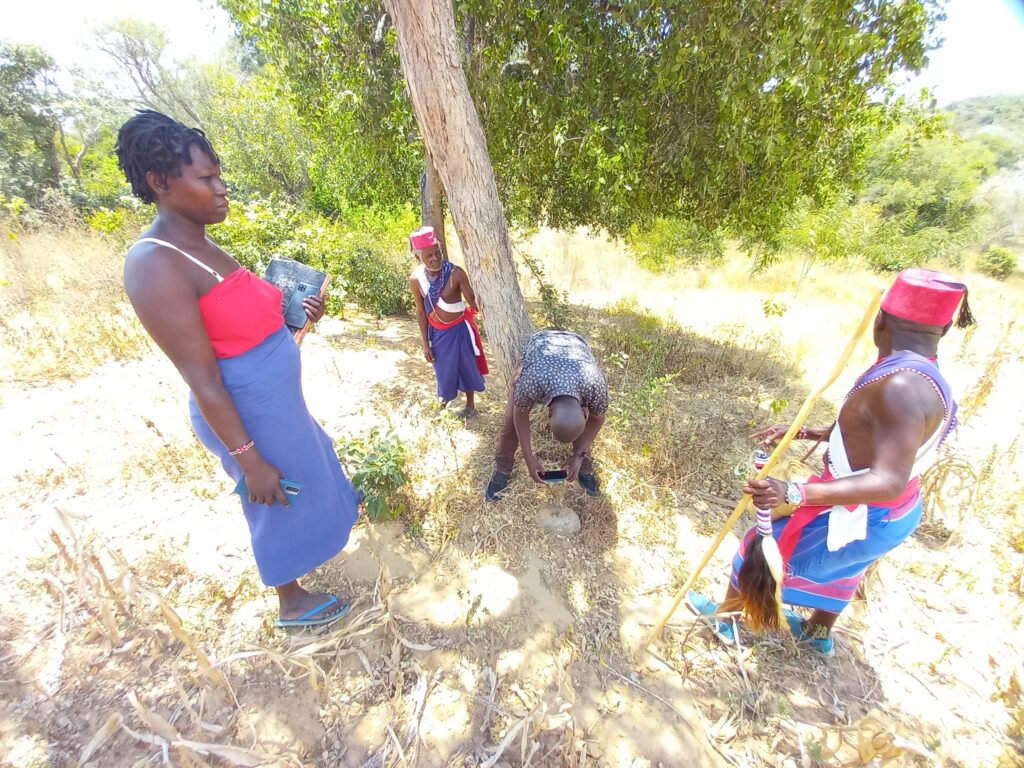By Alloys Musyoka
With the increasing demand for prime land, especially the beach plots, some of Kaya forests are no more with others being on the verge of disappearing as the land-grabbing deepens in Kwale County.
This is due to limited beach land for development along the coastal region forcing land grabbers to change their focus on fertile sacred Kaya forests.
Making it worse the main culprits are often private developers, state officers, and some politicians who collude to steal the Kaya forest lands.
The situation threatens the existence of the Kaya forests and endangered forest coverage and animal species as well as conservation efforts.
In Kenya, Kaya forests are treated as natural heritage and protected by the national government.
In Kwale County there are at least 38 gazetted Kaya forests and two of them were recognized by UNESCO as World Heritage Sites.
The two Kaya forests are Mtswakara and Gandini, according to the Kwale National Museum of Kenya coordinator Matano Abdulrahman.
The Kaya forests are the territory of the nine Mijikenda tribes; the Giriama, Digo, Duruma, Rabai, Kauma, Ribe, Jibana, Kambe, and Chonyi. They are often found on the southern coast of Kenya.
The forests were established around the 16th century but abandoned in the early 20th century.
They are now regarded as the abode of ancestors and are regarded as sacred sites and, as such, are maintained by a council of elders.
For years, these forests safeguarded the homesteads, called “kaya,” of the Mijikenda people from attacks by invaders and served as sacred ritual places and burial grounds.
The locals used to ask for divine powers to cure sickness or ask for rain and an end to a certain disaster because kayas are believed to be an intrinsic source of ritual power and cultural identity.
For years, unnecessarily cutting trees and other forest vegetation was forbidden unless for a few selected purposes.
Because of the forests’ protected status, they became sources of biodiversity, harboring many rare species of plants and animals.
In 1992, the national government through the Coastal Forest Conservation identified the kayas as National Monuments.
Kaya elders in partnership with National Museums of Kenya (NMK), Kenya Wildlife Services (KWS), and Kenya Forest Services (KFS) kept vigil to protect the forests, however at the moment many are in a pathetic condition following heightened land grabbing.
Kaya Ukunda is one of the many Kayas that have been severely affected and it is now a shadow of its former self. About 25 individuals claim ownership of its land with title deeds. The kaya is approximately 40 acres.
According to Abdulrahman, Kaya Ukunda only exists on maps but in reality, it is no more as private developers, locals, and non-locals encroached on the land and sub-divided it to themselves.
Alteration in land adjudication
In 1975 Kayas under the Kwale County Council acted as a trustee on behalf of the local people.
Abdulrahman said it was during that time when a lot of injustices happened since the previous councilors started sub-dividing and leasing the Kaya forest lands and others selling a portion of them to private developers.
Kaya Ukunda, Diani, Tiwi, Waa, and many more were caught up in the saga.
Abdulrahman said by the time the Kayas were being gazetted some of them had already been grabbed.
The officer said the error in the gazettement process was either intentional or by design adding that before any gazettement thorough research must be done but unfortunately the people mandated to do the work bypassed the procedure.
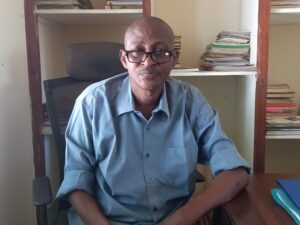
He said that during the survey the government went ahead and picked some elders who physically assisted in demarcating the Kaya forest boundaries.
Abdulrahman said that the kayas were located but not properly adjudicated (given numbers) which paved the way for more land grabbing.
The NMK officer said that the Kaya Ukunda, was reserved outside the initial forest and the actual forest was made a settlement scheme.
At the moment, the area was gazetted as Kaya forest but people have title deeds claiming different ownership of parcels of land.
Former Ukunda councilor Hadi Salim Mwaguo affirmed that local leaders with a few government officers are involved in the Kaya Ukunda and other kaya forests’ land grabbing.
He said the county council is the root cause of the historical land injustices in Kwale.
Mwaguo said they happened to take to court the county council but lost the case against it because some of the elders were bribed and withdrew.
He said the vice was sparked by the competition for beach plots which have become hard to find.
Mwaguo said Kaya Ukunda belonged to seven families from Magutu, Mkwakwani, Bongwe, Mbuani, Mabokoni, Shamu, and Mwamanga villages but unfortunately, the majority of non-locals have invaded the forest land.
Hamisi Juma Mwaviko, one of the locals accused of having grabbed the Kaya Ukunda forest land, denied the allegations.
He said he has a title deed and that the area is under the Diani Settlement Scheme.
Mwaviko admitted that the injustices occurred for the Kaya Ukunda forest land and were done by a few corrupt individuals from the government, especially the land ministry in cahoots with some locals.
He said the Kaya was gazetted but the gazette notice didn’t specify the actual block number of the Kaya.
He said during the 1977 and 1978 land surveys, the area elders were tricked.
“The elders didn’t actively participate in the survey process but were assured that the Kaya land would be set aside for them which didn’t happen,” he said.
The Kaya Ukunda according to the gazette notice Vol. XCIV-No 14 March 1992 that Coast Times Digital was in possession was allocated land that was not initially where the Kaya was.
“All the area of forest land known as Kaya Ukunda measuring approximately 20 hectares in grid square 2,362 of map sheet 201/3, series Y731, edition 3-SK at a scale of 1:50,000 in Kwale District, Coast province,” reads the gazette notice.
Mwaviko said that Kaya Ukunda was allocated land in an area called Kajiado, a shrub outside the forest that is now owned by various people who are not indigenous communities (Mijikenda).
“Where we stand is part of the Diani settlement scheme and was mistakenly identified as Kaya,” he said.
It begs the question of whether the then land officials, national government officials, local leaders, and county council officials knew what they were doing when the land adjudication was being done to deny Kaya Ukunda land deliberately.
Kaya Tiwi
According to Abdulrahman, the old regime wanted to set aside Diani Complex land for tourism during the reign of the late President Jomo Kenyatta.
But the project was nullified when late president Daniel Arap Moi took over.
Moi would later refute claims of grabbing 14 hectares of Kaya Tiwi while directing the land to be given to the community according to Abdulrahman.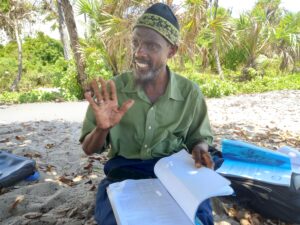
Best Farmers Tiwi Community Based Organization Coordinator Hamisi Juma Mwajao said in 1992 Kaya Tiwi was gazetted and declared a national monument by the NMK.
But in 1998, the then Minister of Homes Affair Sherrif Nasir de-gazetted it under unclear circumstances.
However, NMK maintains that the de-gazettement was not official and doesn’t recognize it.
According to Mwajao, it was during that period of de-gazettement when land grabbers attacked the Kaya Tiwi forest land.
He said the land was divided into nine pieces and sold to different people before the community stood to defend their land.
Mwajao said in 2019, several private developers started coming out claiming ownership of Kaya Tiwi forest land and constructing perimeter walls.
In 2020, the county in partnership with Kaya elders went to court after realizing that the private developers had fake documents, and a court order stopping any development was given.
Coast Times can authoritatively report that Kaya Tiwi has been cleared completely. Indigenous trees of over 100 years and the shrine within the Kaya were also cleared under the supervision of police officers from Matuga.
Mwajao said that afterwards Kaya Tiwi was re-declared again as a national monument by NMK.
But the case is still ongoing and the Kwale court is yet to give judgment.
Intimidations
Mwajao said private developers have support from some top brass and state officers.
He said the private developers normally violate court orders and are protected by security agencies to grab public and people’s land.
Mwajao said police often keep vigil as the land grabbers steal land in broad daylight.
Tycoons in partnership with police officers profile locals as criminals while demanding justice for historical land injustices.
On his part, Mwaguo said he was arrested and detained several times by police for trying to stop land grabbers.
The former counsellor said the police used to accuse him of inciting people to violence which was not true and always released for lack of evidence.
On his part, NMK official Abdurahman said he has always been summoned by senior police officers and threatened for trying to protect the Kayas.
He said the security agencies often asked him to produce title deeds for the kaya forests and warned him not to interfere with the law.
“I have been summoned many times, and even received death threats for standing between the Kaya forest lands and private developers,” he said.
Kaya Mtswakara chairperson Shaban Ndegwa also lamented frequent harassment by locals who have encroached on the land.
He said a few community members have turned some parts of the kaya into farms and interestingly they have plot numbers and await title deeds.
About 10 people neighboring Kaya Mtswakara have encroached it with the national government said to have ironically allocated them allotment letters for the same land.
It is unclear how the government that is supposed to protect Kaya forests facilitates the hiving off of Kaya forest land and allocating it to individuals.
Kaya Diani according to chair Iddi Siwa is suffering the same problem out of 20 hectares only about 7 to 8 hectares are remaining although about 10 people are claiming ownership of the same.
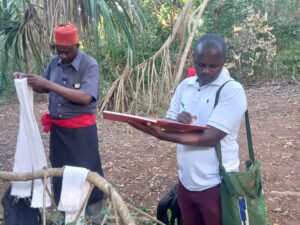
Elders and locals have recently chased away developers who have claimed ownership of the Diani Kaya forest.
At Kaya Gandini a village has been created at the center of the forest with the national government doing nothing to evict the land grabber although National Museum of Kenya officials said that they won a case against the locals occupying part of the Kaya forest over the issue.
Omar Boga, a former county council member, and Bongwe-Gombato MCA, said that the government should do something to save the Kaya forests since they are a source of water reservoir for hotels in Diani.
George Mokaya said that the Kayas have also been used as tourist attraction centers noting that grabbing them is a setback to the tourism sector.
Recommendation
Abdulrahman urged the national government to revoke all title deeds and conduct a fresh survey and adjudication on all the kayas.
He said the National Land Commission and Ethics and Anti-Corruption Commission (EACC) should assume their full function and delve into the land-grabbing issues.
The officer said the county government and KFS should also take full responsibility for protecting the kayas since they have a mandate.
Kaya Diani Secretary Salim Mwasabu said the county should go through with the promised supplementary budget to fence the kayas and develop some of them for ecotourism.
He said people are taking advantage of the idleness of the kaya forest lands to steal them.
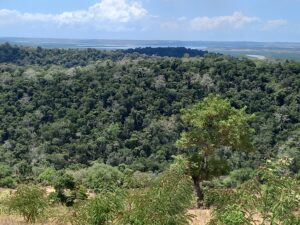
Some years back, former Kwale Governor and the current Mining Cabinet Secretary Salim Mvurya directed that all Kaya be identified and fenced.
According to Abdulrahman, only 10 kayas were surveyed, however, the survey was meant for demarcation and not to generate title deeds.
Mwasabu said that the government should ensure all Kayas are given land titles to curb further land grabbing and other historical land disputes.
Last year, the Ethics and Anti-corruption Commission sent a strong warning to land grabbers in Kwale County and across the country.
According to the EACC chief executive officer Twalib Mbarak, the land grabbers will be met by the full force of the law.
He said the commission is committed to fighting the vice from all fonts and that it won’t be business as usual.
Mbarak said the perpetrators should consider returning the grabbed public and community land before EACC catches up with them.
Mbarak said EACC has filed many cases in court against land injustices adding that they are assured of winning because of the overwhelming strong evidence presented to the court.
He said the commission has gathered enough resources to fight criminals and ensure all grabbed public lands are salvaged and returned to the community.
Mbaraka said EACC is positive that the criminals acquired land through fraudulent processes and possess illegal documents.
He made the statement after EACC recovered the grabbed scenic Chale and Kisite Mpunguti Islands in Kwale County.
Kwale Governor Fatuma Achani said her administration won’t rest until justice is served and all public lands are returned to the community and county government for development.
She said the county will offer enough support to fight the increasing land grabbing.
Achani said the vice has been a major headache forcing thousands of residents to live like squatters.
She said the county in partnership with EACC is working to recover Kuranze, Diani Beach block 28, and Nyari Estate in Kinango among other areas in Tiwi.
Achani said the National Land Commission messed up by renewing some expired leases unlawfully.
The governor said she trusts the judicial system adding that justice shall prevail.
“This country depends on tourism and it can benefit everyone if we maintain peace and let the law take its course,” she said.
Kwale Senator Issa Boi said that the senate will ensure the oversight role is well performed and the public land and its resources are protected from land grabbers and exploiters.
Former Kwale County Commissioner Mwangi Meru said the government was working on identifying the Kaya Forest Lands in the region.
He said they are analyzing how many Kayas and public lands were grabbed before proceeding to court and bringing the perpetrators to book.
Transparency International has been implementing a project titled Land and Corruption in Africa that targeted Nairobi and Kwale counties.
The project explored mechanisms on how people-centered land governance can be supported at the national and local levels and how land-related corruption can effectively be addressed in the country.
The purpose of the initiative is to build linkages with state and non-state actors involved in land governance and gather and share relevant data on corruption in the land sector, its trends, nature, and strategies that have been utilized to combat it.
This will contribute to the development of a body of evidence on land and corruption in Africa having assessed various laws, regulatory provisions, and practices and how well these work.


